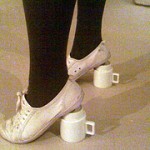News about flu season is always a little scary, bombarding us with the latest figures on how bad the flu is, shortages of vaccine, endless “woe is me” commentary. I don’t like to read these scary headlines, but the reality is that this time of year we are bombarded with tips about how to stay healthy. Wash your hands, take your vitamins, eat chicken soup, get your flu shot, see your doctor within the first 48 hours of symptoms to try and rein in the toll.
One of the most fascinating–and accessible–answers this year has been a study by researchers at the University of Wisconsin. Bruce Barrett, MD, PhD and his colleagues had three groups of participants. One group exercised, one group was simply observed in their regular lives, and one group took a mindfulness-based meditation course. Participants were then monitored by telephone, and tested for illness if they reported “I feel like I might be getting sick.” When participants in the mindfulness course did get sick, the duration of illness was shorter and they recovered more quickly, missing 76% less work than those in the other groups.
Anyone can practice mindfulness. Take time to sit, breathe, rest, practicing being in the moment. Tune into one bodily sensation for just one or two minutes. Teach the red light meditation to your kids: every time you’re stopped at a red light, pick one of the five senses to zero in upon for the duration of the light. Search Youtube and you’ll find lots of ways to introduce yourself to mindfulness. Or stay tuned for the commercial message: Level I and II mindfulness meditation groups are beginning in my office in the first week of February. We practice mindfulness from the very first session, learning to integrate it into your daily life in a way that works for you.












 So laughing is good for us–and sharing it with others is even better,
So laughing is good for us–and sharing it with others is even better,